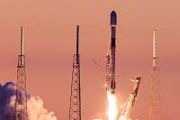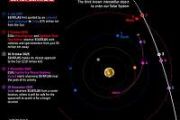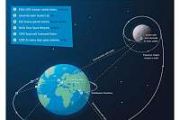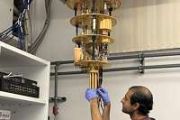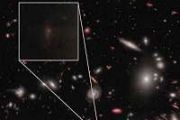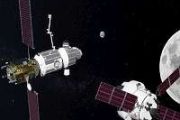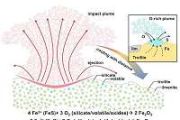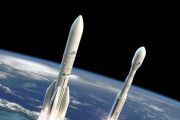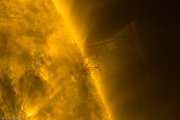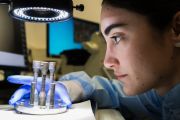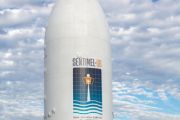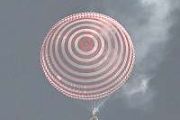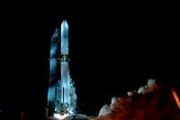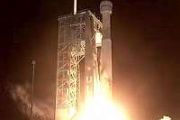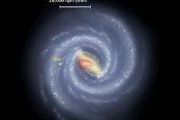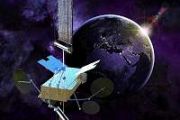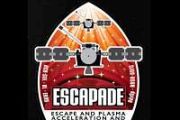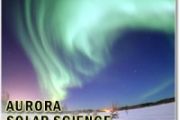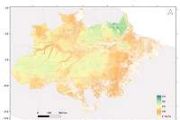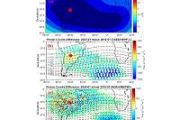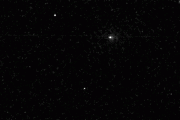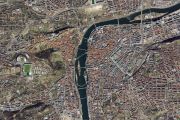
Copernical Team
Weather forecasting, from space to your smartphone
 Have you ever wondered how weather forecasts are created? Without satellites observing the Earth, accurate weather prediction wouldn't be possible. The MetOp-SG* satellites, built by Airbus in Friedrichshafen and Toulouse for the European Space Agency (ESA) and EUMETSAT, will provide a broader range of more accurate data to improve numerical models used in forecasting, as well as observations fo
Have you ever wondered how weather forecasts are created? Without satellites observing the Earth, accurate weather prediction wouldn't be possible. The MetOp-SG* satellites, built by Airbus in Friedrichshafen and Toulouse for the European Space Agency (ESA) and EUMETSAT, will provide a broader range of more accurate data to improve numerical models used in forecasting, as well as observations fo Unibap to Supply Advanced Data Handling Computer for NASA's HyTI-2 ACMES Mission
 Unibap AB (publ) has announced securing an important order for its SpaceCloud iX10 platform, earmarked for NASA's forthcoming Hyperspectral Thermal Imaging satellite mission, HyTI-2. Valued at $350,000 USD, this order marks a significant milestone for Unibap, reinforcing its position in the field of advanced space computing.
The SpaceCloud iX10, Unibap's cutting-edge onboard payload data h
Unibap AB (publ) has announced securing an important order for its SpaceCloud iX10 platform, earmarked for NASA's forthcoming Hyperspectral Thermal Imaging satellite mission, HyTI-2. Valued at $350,000 USD, this order marks a significant milestone for Unibap, reinforcing its position in the field of advanced space computing.
The SpaceCloud iX10, Unibap's cutting-edge onboard payload data h General Atomics to Showcase Optical Communication Terminals in Space with SDA Contract
 General Atomics Electromagnetic Systems (GA-EMS) has been awarded a pivotal contract by the Space Development Agency (SDA). This contract mandates GA-EMS to demonstrate the capabilities of its Optical Communication Terminals (OCTs), which are to be hosted on their GA-75 spacecraft, a 75-kilogram class satellite, in Low Earth Orbit (LEO).
Scott Forney, president of GA-EMS, expressed enthusi
General Atomics Electromagnetic Systems (GA-EMS) has been awarded a pivotal contract by the Space Development Agency (SDA). This contract mandates GA-EMS to demonstrate the capabilities of its Optical Communication Terminals (OCTs), which are to be hosted on their GA-75 spacecraft, a 75-kilogram class satellite, in Low Earth Orbit (LEO).
Scott Forney, president of GA-EMS, expressed enthusi SAFE Orbit Act: A Step Towards Safer and More Efficient Space Operations
 In a major move to enhance space situational awareness (SSA) and manage the increasingly congested low-Earth orbit, US Senators John Cornyn (R-TX), Gary Peters (D-MI), Marsha Blackburn (R-TN), Eric Schmitt (R-MO), Mark Kelly (D-AZ), Roger Wicker (R-MS), and Kyrsten Sinema (I-AZ) have introduced the Situational Awareness of Flying Elements in (SAFE) Orbit Act. This bipartisan bill is aimed at dir
In a major move to enhance space situational awareness (SSA) and manage the increasingly congested low-Earth orbit, US Senators John Cornyn (R-TX), Gary Peters (D-MI), Marsha Blackburn (R-TN), Eric Schmitt (R-MO), Mark Kelly (D-AZ), Roger Wicker (R-MS), and Kyrsten Sinema (I-AZ) have introduced the Situational Awareness of Flying Elements in (SAFE) Orbit Act. This bipartisan bill is aimed at dir Eutelsat Sells OneWeb Share to Airbus U.S. Space and Defense, Advances Asset Optimization
 Eutelsat Group has completed the sale of OneWeb's 50% share in the Airbus OneWeb Satellites joint venture (AOS). This development marks a crucial step in Eutelsat's strategic management of its assets, aiming at portfolio optimization and debt reduction.
The stake in Airbus OneWeb Satellites, a Florida-based business responsible for constructing the satellites for the OneWeb First Generatio
Eutelsat Group has completed the sale of OneWeb's 50% share in the Airbus OneWeb Satellites joint venture (AOS). This development marks a crucial step in Eutelsat's strategic management of its assets, aiming at portfolio optimization and debt reduction.
The stake in Airbus OneWeb Satellites, a Florida-based business responsible for constructing the satellites for the OneWeb First Generatio Boosting European Space Ambitions: EC, EIB, and ESA Unite for Sectoral Support
 In a significant move to bolster the European space sector, the European Commission (EC), the European Investment Bank (EIB), and the European Space Agency (ESA) have announced a collaborative arrangement. This partnership, unveiled at the Space Conference, is set to provide a substantial boost to small and medium-sized enterprises (SMEs) and startups, aiming to enhance Europe's competitive stan
In a significant move to bolster the European space sector, the European Commission (EC), the European Investment Bank (EIB), and the European Space Agency (ESA) have announced a collaborative arrangement. This partnership, unveiled at the Space Conference, is set to provide a substantial boost to small and medium-sized enterprises (SMEs) and startups, aiming to enhance Europe's competitive stan Australian Space Startups to Benefit from UniSA's Enhanced Accelerator Program
 The University of South Australia (UniSA) is taking a significant step in bolstering its support for the burgeoning space industry. In a collaborative effort, UniSA's Innovation and Collaboration Centre (ICC) and the Australian Centre for Business Growth (AuCBG) have unveiled a new scaleup pathway for space startups. This initiative builds upon the already established Venture Catalyst Space acce
The University of South Australia (UniSA) is taking a significant step in bolstering its support for the burgeoning space industry. In a collaborative effort, UniSA's Innovation and Collaboration Centre (ICC) and the Australian Centre for Business Growth (AuCBG) have unveiled a new scaleup pathway for space startups. This initiative builds upon the already established Venture Catalyst Space acce PLD Space secures contract for Spanish small satellite launcher development
 PLD Space has been named the sole contractor in the second phase of a project aimed at developing a Spanish launcher for small satellites. This endeavor, part of the Aerospace Strategic Project for Economic Recovery and Transformation (PERTE), carries a significant tender value of 40.5 million euros.
The awarding of this contract to PLD Space follows a comprehensive evaluation by the Contr
PLD Space has been named the sole contractor in the second phase of a project aimed at developing a Spanish launcher for small satellites. This endeavor, part of the Aerospace Strategic Project for Economic Recovery and Transformation (PERTE), carries a significant tender value of 40.5 million euros.
The awarding of this contract to PLD Space follows a comprehensive evaluation by the Contr China's FY-3G commences space-based atmospheric precipitation measurements
 Researchers from the China Meteorological Administration have achieved a significant milestone in Earth observation with the successful deployment of the FengYun 3G (FY-3G) satellite, a novel technology designed to collect detailed precipitation data from space. This satellite represents the first of two planned missions aimed at improving our understanding of global precipitation patterns, incl
Researchers from the China Meteorological Administration have achieved a significant milestone in Earth observation with the successful deployment of the FengYun 3G (FY-3G) satellite, a novel technology designed to collect detailed precipitation data from space. This satellite represents the first of two planned missions aimed at improving our understanding of global precipitation patterns, incl ClearSpace and Orbit Fab Forge Strategic Partnership for In-Space Refueling Services
 ClearSpace and Orbit Fab has unveiled a comprehensive strategic partnership that is aiming to significantly advance in-space refueling and servicing capabilities which will crucual for a sustainable space economy to develop and grow.s
Under and MoU agreement, Orbit Fab and ClearSpace are committed to developing critical technologies. This initiative builds upon their prior collaborative ef
ClearSpace and Orbit Fab has unveiled a comprehensive strategic partnership that is aiming to significantly advance in-space refueling and servicing capabilities which will crucual for a sustainable space economy to develop and grow.s
Under and MoU agreement, Orbit Fab and ClearSpace are committed to developing critical technologies. This initiative builds upon their prior collaborative ef 

